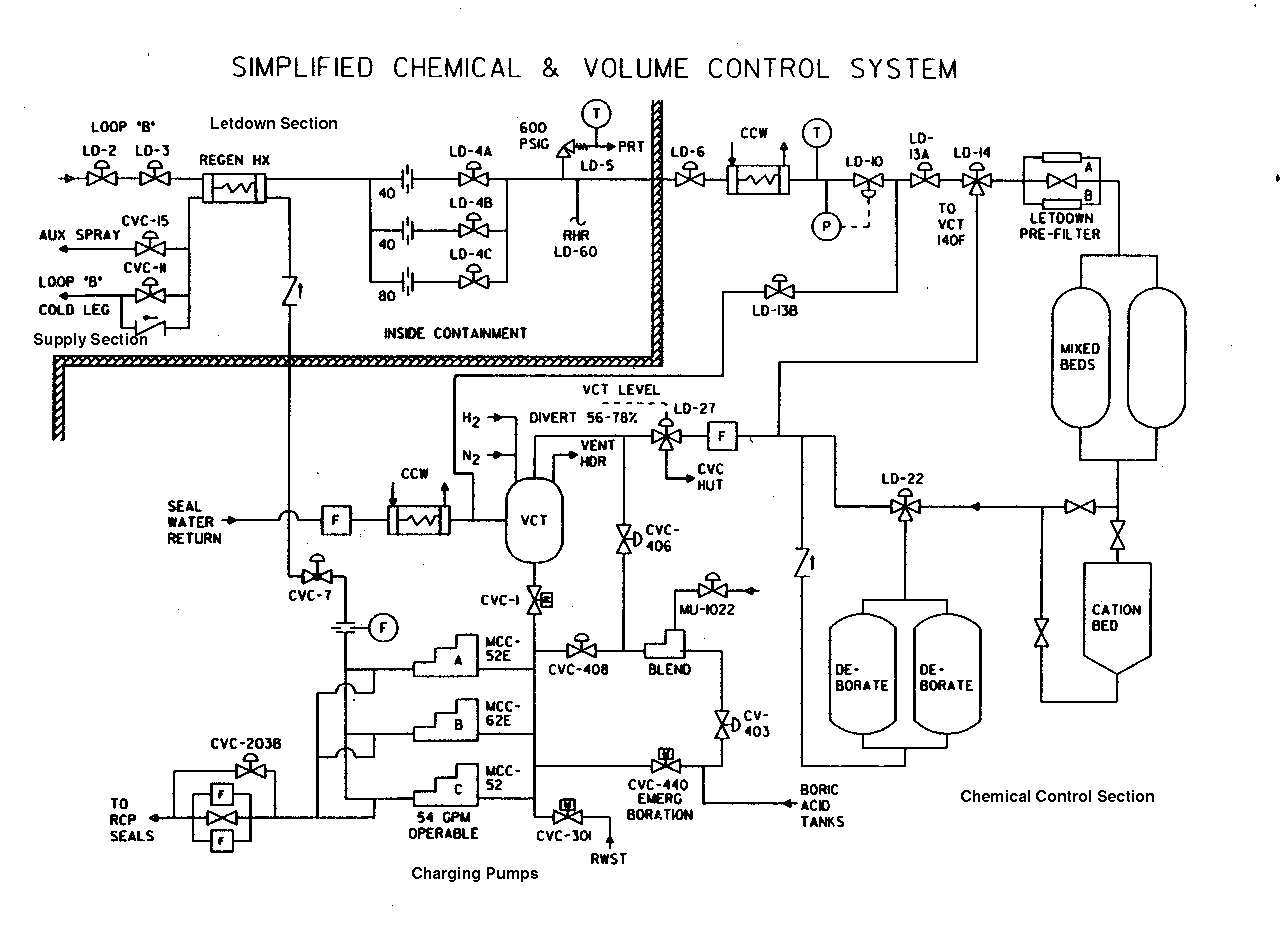
Reactor Water Chemical Cleanup Systems
Function
Reactor Water Chemical Cleanup Systems are used in light and heavy water reactor designs. The function of this system is:
The system also provides two other functions in the PWR and BWR:
System Names - Key Functions - Major Components
The following names are often given to systems that perform these functions:
BWR - Reactor Water Cleanup (RWCU)
This system is used to remove chemical species from the Recirculation System.
The water passes through isolation valves, then through heat exchangers which cool the water, then to ion exchangers which remove the undesired species, then back to the recirculation system.
PWR - Chemical & Volume Control System (CVCS)
This system is used to add hydrogen for combination with any oxygen present in the reactor cooling system. Lithium hydroxide is added to control the pH (acidity-basicity) of the reactor cooling system. Boric acid is added or removed to control the power in the reactor. The system also removes undesired chemical species.
The water passes through isolation valves, then through heat exchangers which cool the water, then to ion exchangers. There are 3 types of ion exchangers:
- Mixed bed which removes undesirable positive and negative ion species,
- Cation which can be used to lower the pH in the reactor cooling system,
- Deborating ion exchanger which is used during the last days of an operating cycle to reduce the boric acid concentration, since this method is more efficient at removing the boron when the concentration is low (less than 100 ppm boron)
The water then passes to a Volume Control Tank which acts as a reservoir for makeup as needed to the reactor cooling system. The return function would be considered as part of the (Normal) Reactor Makeup function. This is another function of the CVCS system. The hydrogen gas is added in the Volume Control Tank. Lithium Hydroxide is added to the suction of the pumps that return the water to the Reactor Cooling System.
Simplified Diagrams
The following diagram illustrates the general layout of a CVCS or RWCU system.

Copyright © 1996-2006. The Virtual Nuclear Tourist. All rights reserved. Revised: January 5, 2006.